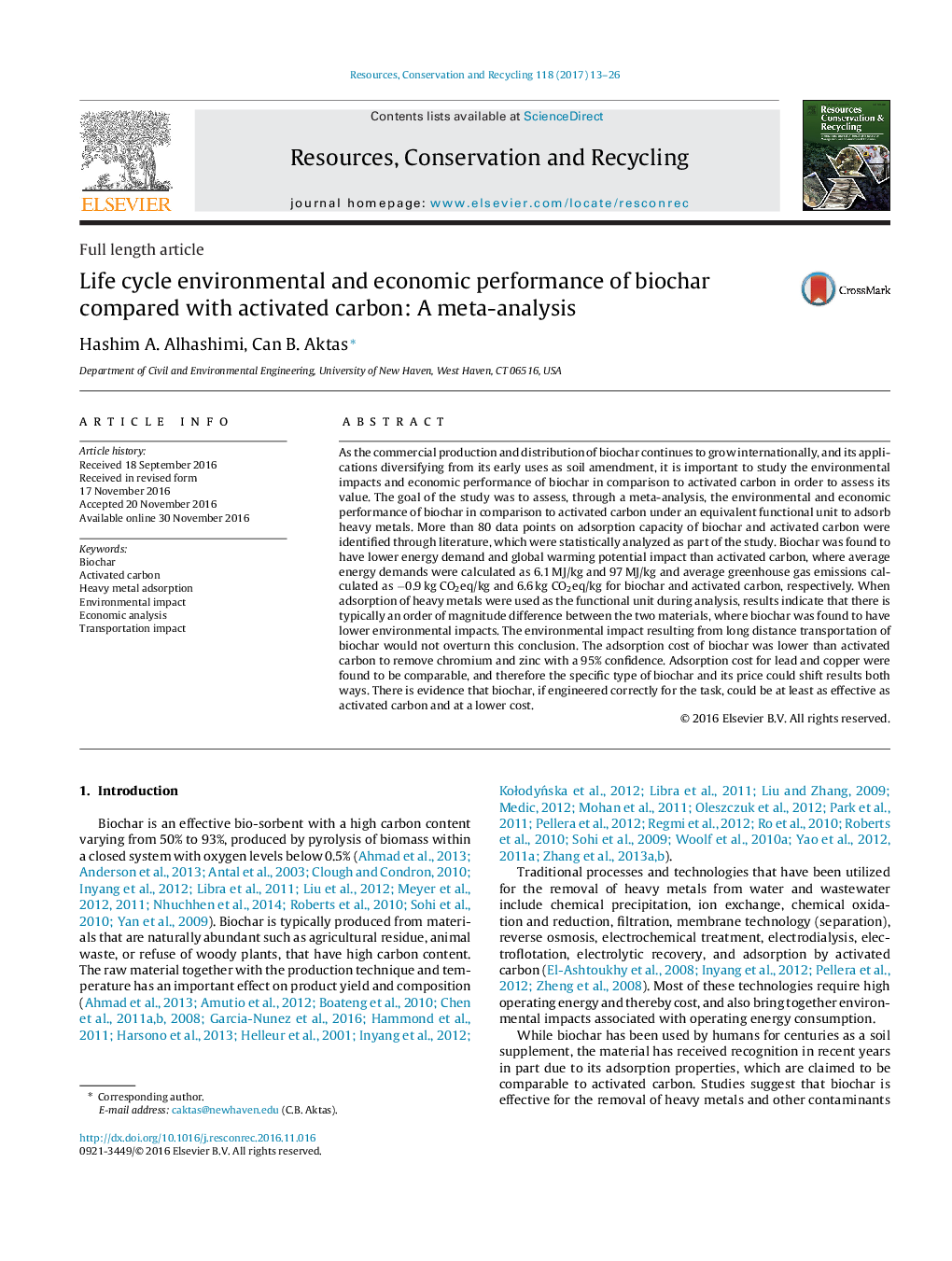| Article ID | Journal | Published Year | Pages | File Type |
|---|---|---|---|---|
| 5118865 | Resources, Conservation and Recycling | 2017 | 14 Pages |
â¢Average energy demands were 6.1 MJ/kg biochar and 97 MJ/kg activated carbon.â¢Cost of biochar lower than activated carbon to adsorb chromium and zinc.â¢Cost of biochar comparable to activated carbon to adsorb lead and copper.â¢Biochar has lower impacts than activated carbon even after transportation phase.
As the commercial production and distribution of biochar continues to grow internationally, and its applications diversifying from its early uses as soil amendment, it is important to study the environmental impacts and economic performance of biochar in comparison to activated carbon in order to assess its value. The goal of the study was to assess, through a meta-analysis, the environmental and economic performance of biochar in comparison to activated carbon under an equivalent functional unit to adsorb heavy metals. More than 80 data points on adsorption capacity of biochar and activated carbon were identified through literature, which were statistically analyzed as part of the study. Biochar was found to have lower energy demand and global warming potential impact than activated carbon, where average energy demands were calculated as 6.1Â MJ/kg and 97Â MJ/kg and average greenhouse gas emissions calculated as â0.9Â kg CO2eq/kg and 6.6Â kg CO2eq/kg for biochar and activated carbon, respectively. When adsorption of heavy metals were used as the functional unit during analysis, results indicate that there is typically an order of magnitude difference between the two materials, where biochar was found to have lower environmental impacts. The environmental impact resulting from long distance transportation of biochar would not overturn this conclusion. The adsorption cost of biochar was lower than activated carbon to remove chromium and zinc with a 95% confidence. Adsorption cost for lead and copper were found to be comparable, and therefore the specific type of biochar and its price could shift results both ways. There is evidence that biochar, if engineered correctly for the task, could be at least as effective as activated carbon and at a lower cost.
Graphical abstractDownload high-res image (145KB)Download full-size image
